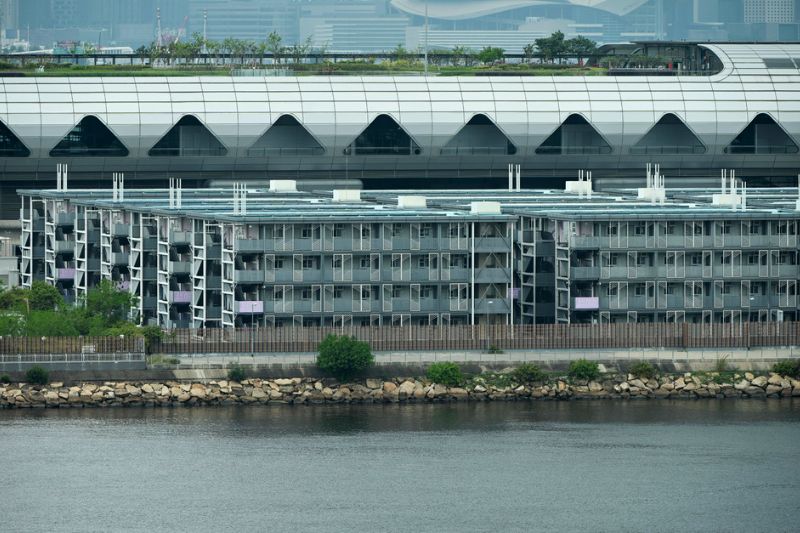

Using materials efficiently in modular construction reduces embodied carbon emissions according to study.
A comparative study from Hong Kong examines the carbon emissions of onsite versus offsite construction, and provides a granular analysis of each building process. According to the report published in Nature, the construction industry significantly contributes to carbon emissions, particularly in urban areas like Hong Kong. The study compared two construction methods – Modular Integrated Construction (MiC) and conventional approaches – focusing on their environmental impact. It specifically explored the differences in embodied carbon emissions between these two methods. (main pic: Kai Tak covid facility built using MiC in Hong Kong.)
What is embodied carbon?
Embodied carbon refers to the carbon dioxide (CO2) emissions created during the production, transportation, and assembly of building materials. It includes everything from the extraction of raw materials to the construction process onsite. Unlike operational carbon, which is generated by the energy a building uses throughout its life, embodied carbon is locked in from the moment the building is completed.
Modular Integrated Construction (MiC)
Modular Integrated Construction (MiC) is a method where building modules are created in a factory and transported to the site for assembly. It’s gaining popularity in Hong Kong because it addresses labour shortages and speeds up construction. MiC also offers significant environmental benefits by reducing both waste and construction time.
Case Study: Kai Tak Community (covid) Isolation Facility
A comparative study conducted on the Kai Tak Community Isolation Facility in Hong Kong provided real-world data on embodied carbon in MiC and conventional onsite construction. The findings revealed that using MiC resulted in a 20.7% reduction in embodied carbon compared to traditional methods.
How MiC reduced carbon emissions
Several factors contribute to the lower carbon footprint of MiC:
Materials and their carbon impact
While MiC in Hong Kong primarily uses steel, which has a high embodied carbon content, the precision and efficiency of its use can offset this impact. Conventional construction, on the other hand, relies heavily on reinforced concrete, which also has a significant carbon footprint due to the energy required to produce it.
Transportation and assembly
One of the advantages of MiC is the reduced need for transportation of individual materials to the construction site. With prefabricated modules, fewer deliveries are required, reducing the emissions from transport. Additionally, the onsite assembly process is quicker and requires less heavy machinery compared to conventional construction.
Challenges in urban areas
Despite its benefits, using MiC in dense urban areas like Hong Kong presented challenges. Transporting large modules through busy streets can be difficult, and there are limitations on the size of modules that can be delivered to the site. However, despite these challenges, the reduction in carbon emissions, according to the study, makes MiC a viable option for sustainable urban construction.
However, the report confirms that while modular construction offers significant opportunities to reduce carbon emissions, there is still room for improvement. Innovations like using low-carbon materials and recycling modules at the end of their life could further enhance the environmental benefits. Additionally, improving logistics, such as using ships for transporting larger modules, could make MiC even more efficient.
Find the report HERE